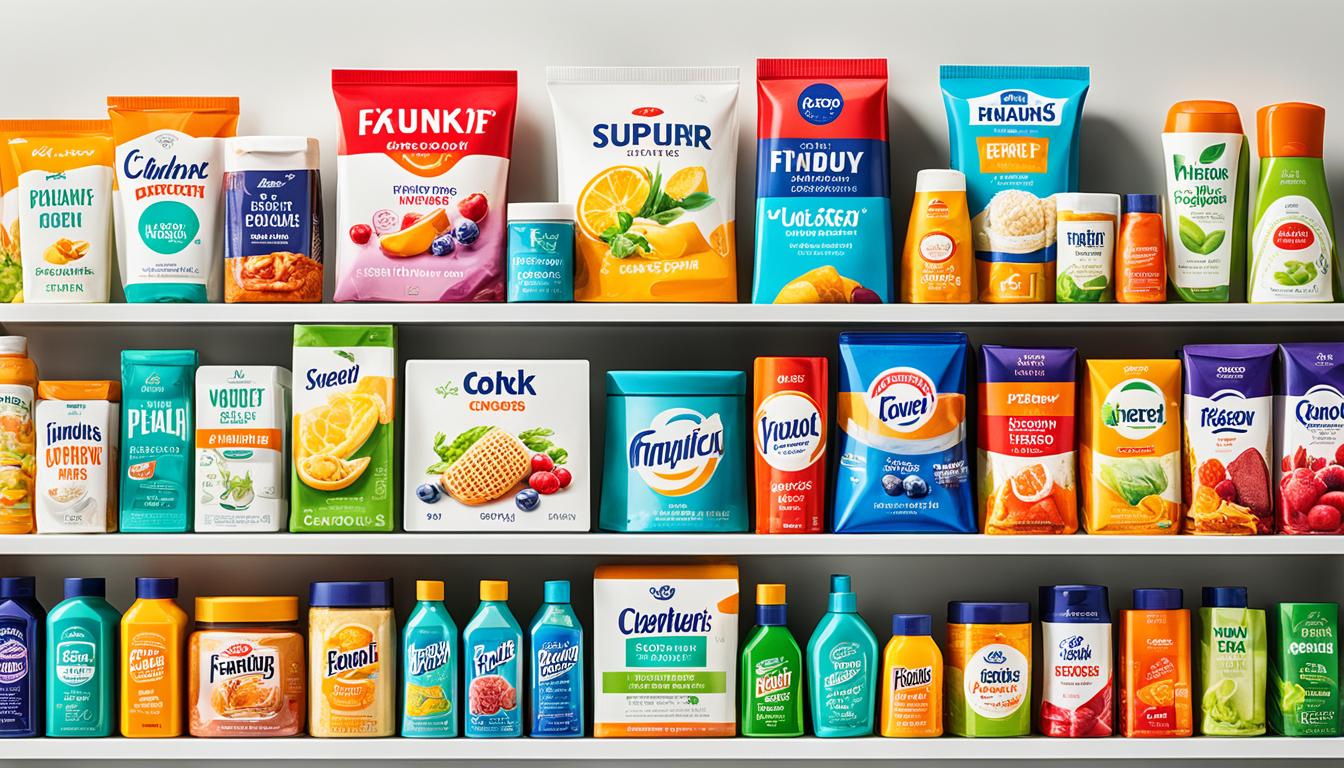
FMCG: Understanding Fast-Moving Consumer Goods
In 2023, Nestle SA made a huge $99.32 billion, and PepsiCo Inc. earned $91.47 billion. These numbers show how big and powerful the fast-moving consumer goods (FMCG) industry is.
FMCGs are items that sell quickly and at low cost. They have a short shelf life but are in high demand. Examples include packaged food, toiletries, beverages, and cleaning products.
The FMCG sector has grown a lot over time. From the 1980s to the early 2010s, it grew about 9% each year. Even with Americans spending more on groceries in 2023 but buying less, the industry still made a lot of money. This shows how strong the FMCG market is.
FMCG products make up over half of what people spend globally. They are essential for daily life because they are used often and have a short shelf life. This demand helps the FMCG industry stay profitable and creates many jobs.
To compete, FMCG companies are changing their strategies. They are focusing on online shopping, improving their supply chains, and offering more products. They use AI and big data to understand what customers want and innovate.
The FMCG sector is key to the global economy. It drives trade and reaches people all over the world. Its fast turnover and low prices meet basic human needs, creating a lot of demand. This demand leads to competition, innovation, and loyalty among consumers.
We will look into how FMCGs affect our daily lives and the strategies companies use to stay competitive.

Characteristics of FMCG Products
FMCG products, or Fast-Moving Consumer Goods, have special traits that make them stand out. These traits explain why they are so important to consumers.
Fast-moving nature: FMCG products are easy to find in many stores around the world. People buy them often, sometimes every day. Things like bread, coffee, shampoo, and toothpaste are key parts of our daily lives.
Low unit price: FMCG products are usually cheap. This makes them affordable for many people. It’s a big reason why they are so popular.
Short shelf life: FMCG products don’t last long before they get used up. Often, they’re gone within a few hours or days. Retailers work hard to keep them fresh and reduce waste.
High consumer demand: FMCG products are essential for daily life, leading to constant demand. People stick with their favorite brands, buying them again and again.
FMCG products are loved for their low cost, nice packaging, and frequent buying. You can find them in many places, like supermarkets, online, and more. Their wide availability meets the steady demand, with little change in how people buy them.
FMCG products are made in standard sizes and styles, making mass production easy. This standard helps ensure they’re always available and can be made in large amounts. Retailers benefit from this, as they need to restock often.
FMCG products are crucial in many areas. In food and drinks, they cover everything from snacks to beverages. Personal care items, cleaning supplies, and health products are also part of FMCG. This shows how wide-ranging FMCG products are in our lives.

Importance and Impact of FMCG in the Market
Fast-Moving Consumer Goods (FMCG) are very important in the market. They affect the economy and how people shop.
FMCG companies make a lot of money. For example, Procter & Gamble made $71 billion in 2020. Unilever made over $58 billion, showing how big they are in the FMCG world. These numbers show how big of an impact FMCG companies have.
FMCG also create a lot of jobs. They employ millions in manufacturing, distribution, retail, and marketing. This helps the economy grow and stay stable.
FMCG products offer many choices to consumers. You can find everything from toothpaste to soft drinks. This variety helps build brand loyalty by meeting different needs and preferences.
Looking at FMCG products can tell us a lot about the market. For example, Nestlé made over $92 billion in 2020. This shows how big it is in the FMCG industry. By studying FMCG companies, economists can understand market trends.
FMCG companies are also great at managing their supply chains and getting products to consumers. They’ve improved their online shopping to keep up with changing trends. This makes the industry strong and able to meet new consumer needs.
FMCG’s role in the market is clear. They make money, create jobs, offer choices, and act as market indicators. FMCG companies are changing consumer behavior with sustainable products. Their efficient ways of getting products to stores help the economy grow.
Conclusion
FMCG, or fast-moving consumer goods, play a big role in our everyday lives. They are affordable, in demand, and move quickly off the shelves. This makes them a huge part of India’s economy.
The FMCG market in India has grown a lot over the last ten years. It grew by 21.4% and became the fastest-growing market in the Asia Pacific in 2018.
Knowing about FMCG helps us see how important these goods are. They rely a lot on distribution channels to get to us. Most marketing money goes to these channels. The urban market brings in about 55% of the revenue in FMCG in India, while the rural market also plays a big part.
What people buy and how they live affects FMCG. As people’s needs and lives change, new products will come out. This will push innovation in the industry. Sustainability is also becoming more important, with companies working to lessen their environmental impact.
FMCG companies need to keep up with the fast-changing digital world. They must innovate in marketing to stay ahead. Social media is key for getting brands noticed and engaging with customers. Using sales automation software can also make things more efficient and profitable by simplifying processes.
